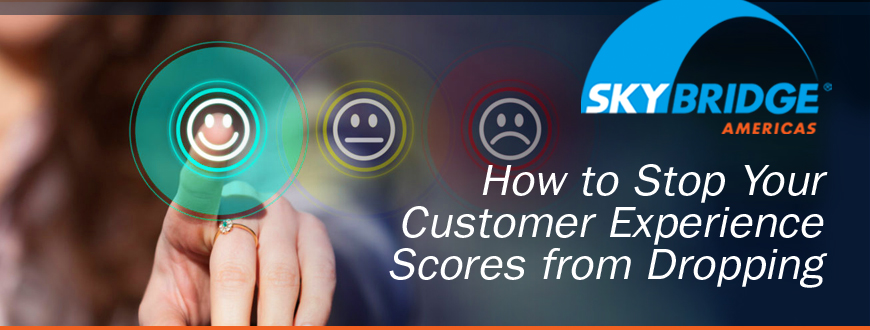As You Map The Way to Your Next Normal
There’s so much talk these days about “getting to the new normal.” In his recent article, Adrian Swinscoe shared some recent data about the impact of COVID-19 on CX scores: according to Cogito, CX scores have fallen by 4% worldwide. More troublingly for brands who rely on their customer care call centers, Cogito’s data showed a 34% increase in in-call notifications to agents, reminding them to display more energy on customer calls – and a 7% increase in notifications prompting agents to show more empathy.
It’s too soon to know all of the circumstances behind those numbers or how they’ll ultimately be validated by larger studies. But here’s what I see in those numbers: I see customer care operations that were likely unprepared for a rapid, mass migration of agent teams from on-site workspaces to at-home offices. I’ve spoken with countless organizations who rose to the challenge and worked valiantly to meet their customers’ needs as they moved as fast as they could to get their agents set up remotely. But those transitions have been painful, bumpy, and damaging to customer relationships.
In his piece, Swinscoe talks about the path back. As I read it, I saw it as a reminder of the unknowns that lie ahead and the urgency so many brands now face in ensuring that their customer care call centers are better prepared for next time. That level of preparedness will take a commitment to ongoing investments in systems, infrastructure, and a dramatically different hiring and management model.
If you would like to know more about how Skybridge Americas can help you rebuild your CX scores, please reach out. We would love to talk.
Maintaining A Consistent Customer Experience In A Transition To A New Normal
by Adrian Swinscoe
While many countries are still grappling with the first wave of infections from the coronavirus pandemic, lockdown conditions in many other countries are easing.
That is causing many organizations to think through what a transition to a new normal will look like.
Now, it’s fair to say that that will mean different things for different organizations.
Some have transitioned to remote working and have continued to operate where possible, others have shut down their operations and have furloughed their employees. In contrast, some others have operated a hybrid model where they have furloughed some employees while allowing others to work remotely.
But, what is clear is that organizations at some point will need to move towards a new way of working.
To do that Marti Beller, president of Kobie, a global leader in loyalty marketing, believes that, “Organizations should prepare for a return to ‘normal’ far before it actually happens, such as adapting to current circumstances like customer needs and evolving consumer behaviors.”
Beller goes on to say that to enable that it will be “crucial to understand the emotional needs and motivations of both consumers and employees as we make the return to ‘normal’ operating procedures.”
However, given the variety of different circumstances that employees and organizations face, it is very likely that a move back to ‘business as usual’, where everyone returns to working on-site or in an office will not happen very quickly and will not necessarily happen for everyone.
As a result, remote working and, in particular, the use of remote customer service teams is looking like it is going to become a critical part of ongoing operations and customer service success going forward.
That is going to pose several challenges for organizations going forward that will include things like:
- (Re)defining what excellent service looks like in this new environment and under new operating conditions.
- Assessing what tools, equipment, internet connectivity levels, training, and conditions are needed to facilitate a sustained, long-term, and perhaps semi-permanent move to remote working. And what organizations may need to do to help some employees achieve that setup.
- Deciding who is going to work from home and who is going to work on-site and also if employees can move flexibly between those two groups.
- The scheduling and performance management of their employees.
- The management of employee health, safety, and well-being through platforms like Eden Health.
- What role technology can play in helping both deliver a better employee and customer experience; and
- What sort of culture and supervisory, management, and leadership skills and behaviors will be required to pull all of this off.
To do that, I believe, organizations will have to intentionally design the employee experience paying particular attention to the demands of this new and changing environment we find ourselves in.
Read the entire article here >
Bobby Matthews
Senior Vice President, Sales and Marketing
Skybridge Americas
bmatthews@skybridgeamericas.com
Find out how Skybridge Americas can help you delight your customers and grow your business.
We seamlessly integrate our superior customer care skills with your brand messaging. For more information, contact us at 763-317-4794 or submit the form below!


